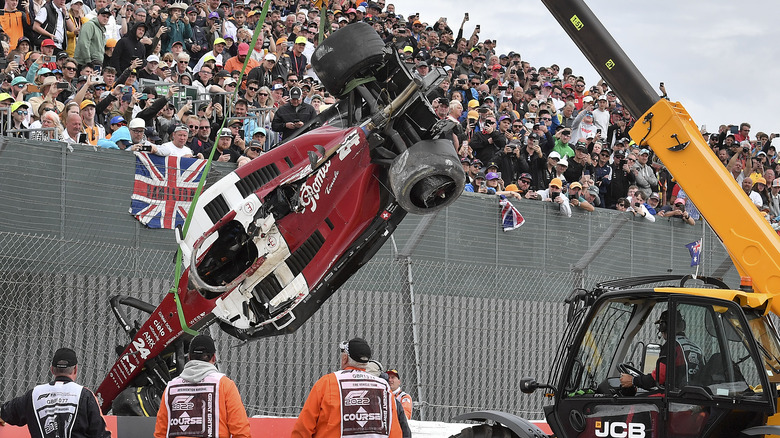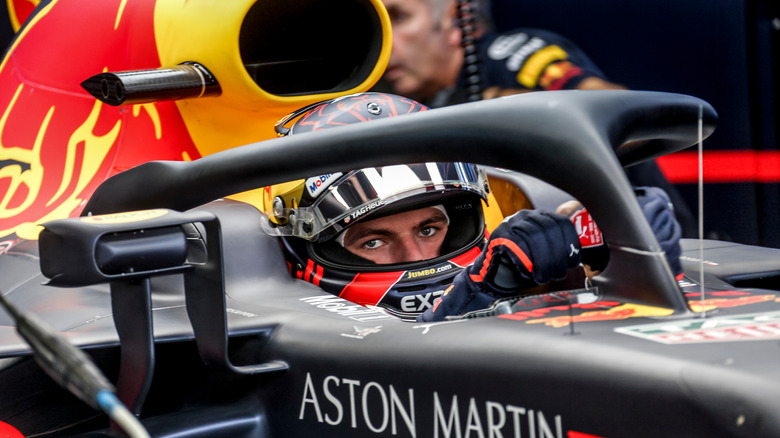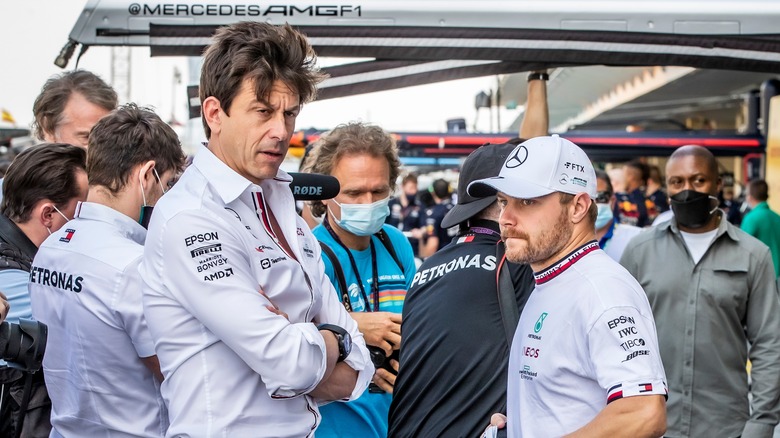The Formula 1 Rule Change That Saved This Driver's Life
Formula One is among the world's most dangerous sports, with numerous drivers having been seriously injured or even killed throughout its history. A total of 52 drivers have died since the sport began in 1950; among them are names like Gilles Villeneuve, Ayrton Senna, and most recently, Jules Bianchi.
Senna's death, which occurred at the 1994 San Marino Grand Prix and one day after Austrian driver Roland Ratzenberger was killed in qualifying, prompted a serious change in the sport. Safety measures were implemented, and no driver suffered a fatal accident until Bianchi's crash at the 2014 Japanese Grand Prix. The tragedy again caused the sport to look at increasing driver safety.
The most recent major safety development in Formula One is the Halo, a strong titanium cage designed to protect the driver's head. Despite only being around since 2018, the Halo has already saved a number of drivers' from death or serious injury. Drivers who probably owe their lives to the Halo include Charles Leclerc who was protected from Fernando Alonso's tire during a crash at the Belgian Grand Prix; Lewis Hamilton, who would have been killed by Max Verstappen's wheel at the Italian Grand Prix; and most recently a driver at the British Grand Prix that traveled a long distance upside down and at high speed.
The Halo fits with F1's record of outstanding engineering
According to Mercedes, the 15-pound Halo is strong enough to hold up one of London's 12-tonne double-decker buses. It is an astounding feat of engineering from a sport that has brought the world innovation after innovation over the decades. Most of the Halo's weight consists of titanium, which is a light but incredibly strong metal that is fairly abundant on Earth but very difficult to refine. However, the extra weight isn't just limited to the device, as the car's chassis has to be modified to take any forces the Halo could be expected to endure.
Structurally, it consists of a round piece that acts like a roll cage, and a support pillar that comes up from the center of the car. There is also an aerodynamic covering added to the Halo, as a plain round tube would slow the car down in a sport where a fraction of a second per lap can make a massive difference. As F1 is a dynamic and ever-evolving sport where teams compete to get the most from every piece of their car, the Halo has changed quite a bit since its introduction in 2018. As a result, the current Halo, known as the Halo 4, is stronger and more aerodynamic than its predecessors (via Race Fans).
Adopting the Halo did cause controversy
Although it has some obvious safety benefits, the Halo has received some criticism from drivers. Back in 2016, before the Halo had been given a chance to prove its worth, seven-time world champion Lewis Hamilton described it as "the worst looking mod in Formula 1 history," according to Motorsport.
Mercedes boss Toto Wolff also had his share of criticism for the new safety device, telling reporters that if he was given a chainsaw, he would "take it off" before adding (via Autosport): "We need to look after the driver safety but what we have implemented is aesthetically not appealing. We need to tackle that and come up with something that looks better. It is a massive weight on the car and you screw up the center of gravity." There have also been concerns about driver visibility and added weight. The main visibility concern surrounds the central pillar, and it is something very noticeable on the driver cams F1 fans sometimes see during races.
However, Finnish driver Valtteri Bottas has dismissed those concerns, saying the pillar is not as obstructive as it seems and is something drivers soon get used to. Bottas also claims the several pounds the Halo weighs doesn't really have too much of an impact on a driver's race, saying, "Honestly it's not massive because we are used to driving with different weights because we start the race with 100 kilos [of fuel] and at the end of the race it's zero, nearly, so it's a massive difference. Plus, minus ten kilos it's not a big difference." The FIA says the device is currently mandatory in Formula 1, Formula 2, Formula 3, Formula Regional, Formula E, and Formula 4.
It saved another life at Silverstone
The Halo again proved its worth at the British Grand Prix when a major crash caused the race to be paused for an hour. During the first lap, Zhou Guanyu's car ended up involved in a near-200 mph crash. Guranyu's Alfa Romeo then spun out, flipped, and made its way towards the grandstand's crash barrier upside down. After hitting the barrier, the Chinese driver's vehicle ended up going over the top before becoming lodged between the crash barrier and the catch fence behind it. He was eventually rescued from the crash by paramedics and taken to a local hospital.
Despite the devastating crash and the time it took to free him from the car, Guanyu escaped the incident unscathed. He later took to Twitter to assure fans he was fine and credit the Halo with saving him.
I'm ok, all clear. Halo saved me today. Thanks everyone for your kind messages! pic.twitter.com/OylxoJC4M0
— 周冠宇 | Zhou Guanyu 🇨🇳 (@ZhouGuanyu24) July 3, 2022
The Halo is arguably the most important feature added to a racing car in decades. It's unsettling to think how much talent, including current and future world champions, would no longer be with us if it wasn't for this fantastic safety innovation.


